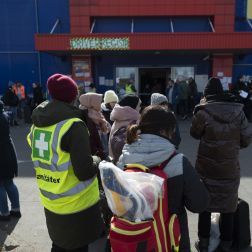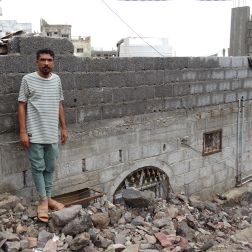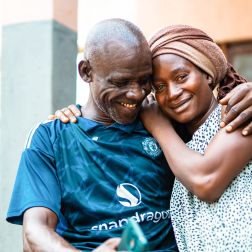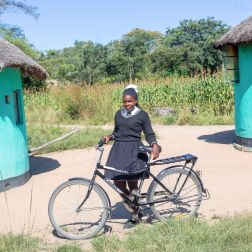- 5 mins read time
- Published: 16th September 2020
Dhaka’s garment workers – campaigning for a living wage and safe work conditions
This is the latest of our #SecondHandSeptember blogs on the human and environmental costs of throwaway fashion, and how shopping second hand can help both people and planet.
In Bangladesh, a worker would need to be paid more than 4.5 times more than the current minimum wage to afford a decent standard of living – and almost nine times more to support a family.
Most workers earn 8,300 Taka (€82) a month, but need 16,000 Taka (€160) for a living wage. This which would cover basic needs such as food, healthcare, education, clothing and transport.
Oxfam supports formal and informal garment workers through a programme which funds four leadership and empowerment centres for women in the slums. These facilities are training centres where the women can develop new skills and career opportunities.
We provide business training and cash support to start small businesses. Many participants are doing well, making dresses with sewing machines, or baking goods to sell at school canteens. The programme is also helping women with training on how to cope with sexual harassment at work.
Oxfam also has a Living Wage campaign for women’s economic empowerment. Working with our partners, including the Bangladesh Centre for Workers Solidarity and the Bangladesh Institute for Labour Studies, we work for decent employment, safe workplaces, a living wage and social protection.
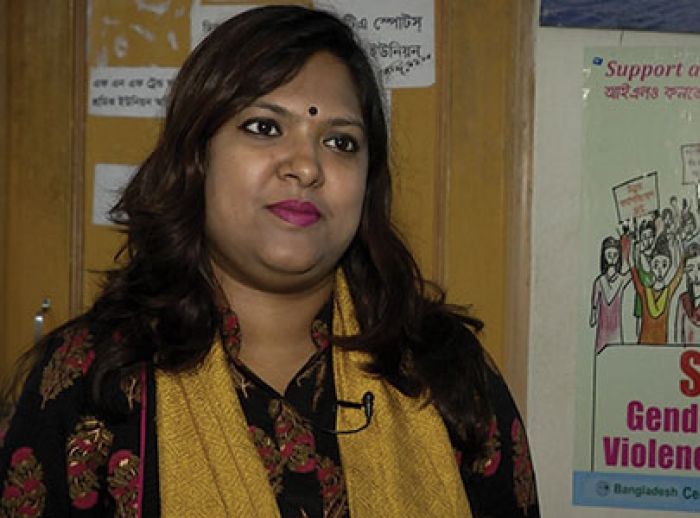
“Our women need support from the global community.”
Rifat, who works with the Bangladesh Centre for Workers Solidarity, said, “Many female garment workers face challenges in their personal lives because of social norms being cast aside. Women have left family members caring for their children and can face isolation, violence or sexual harassment and bullying in work. Some owners think women do less work than men so they have lower positions as helpers or operators and men get highest positions.
"When we started the work, we saw many challenges. We could see the management was not aware of, and workers did not know, their rights. Now they are more aware and they can talk for themselves and represent themselves.
“Big brands have a responsibility for ensuring workers rights. The government rates are not sufficient to provide food, education, rent and healthcare. The market prices are high here – a living wage is important. It takes brands, buyers and our national government to respond. They contribute to the economy and we need to help them.”
“I survived in 2012. I jumped out a fourth-floor window to survive. I didn’t want to burn. I knew this way if I jumped my parents would get my body.”
Sumi Abedin jumped from a fourth-floor window during the 2012 Tazreen factory fire, a blaze which claimed the lives of more than 110 workers. At the time, she was earning the equivalent of €36 a month and was struggling to get by.
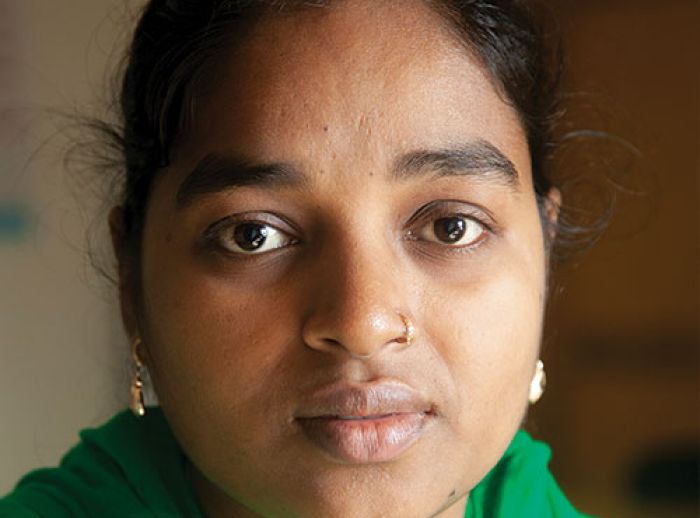
“I survived in 2012. I jumped out a fourth-floor window to survive. I didn’t want to burn. I knew this way if I jumped my parents would get my body.”
Sumi Abedin jumped from a fourth-floor window during the 2012 Tazreen factory fire, a blaze which claimed the lives of more than 110 workers. At the time, she was earning the equivalent of €36 a month and was struggling to get by.
Sumi broke her right hand and leg, had head injuries and was hospitalised for six months. Through the International Labour Organisation, she received compensation worth 250K taka, or approximately €2,500. Some people got more depending on their injuries. Sumi now campaigns for workers’ rights.
Why is she speaking out on workers’ rights?
“For awareness and the greater good – to help other people get compensation for what they lost in fires. It doesn’t cover the trauma but it’s still something.”
Sumi went to the US to speak about her experiences – before that, she had never been outside the country. The buyers were denying Tazreen workers had been injured but she was proof they had. Sumi was 17, almost 18, when the fire broke out. She had started working in the facility at the age of 13 even though workers are supposed to be 18.
“Currently things have improved a little regarding fire safety. Most workers have husbands so they can get by but it’s not easy. Many leave kids behind with grandparents and are forced to live separated from their children. They send money to support them each month.”
Sumi meets her child every two months. Others only see them once or twice a year, at Eid when they can afford to travel home.
We asked Sumi if she would ever work in a garment factory again. She said she would not, nor would she allow her daughter to.
“We don’t want any more disasters like Rana Plaza and Tazreen. No parents should lose their children this way.”
